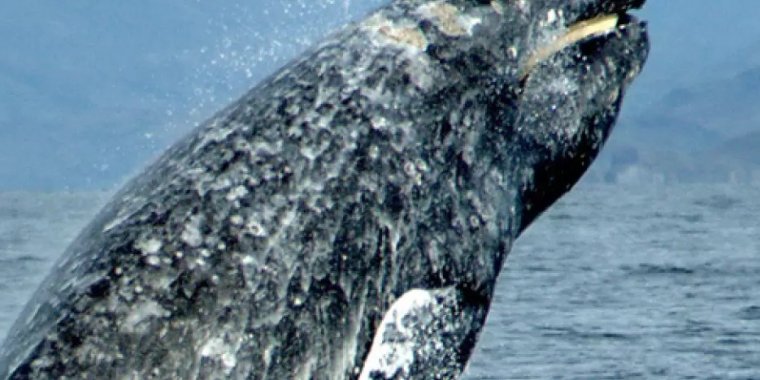| News / World News |
Gray whale die-offs driven by food supply swings in changing Arctic conditions
A long-term Arctic biological data set maintained by University of Maryland Center for Environmental Science (UMCES) scientists has been instrumental in determining the cause of a series of die-offs of eastern Pacific gray whales.

A new study's conclusions depend on long-term data on gray whale prey in the Bering Strait region. Photo: Merrill Gosho/NOAA
According to a study, fluctuating stocks of a shrimp-like creature living in the sediments of the Bering and Chukchi seas are likely to have caused three major die-offs in the eastern North Pacific gray whale population since the 1980s.
During each of these die-offs, including one that began in 2019 and is ongoing, the gray whale population has been reduced by up to 25% over just a few years.
"This study shows the value of collecting data year after year in the Arctic to address the question of how climate change is impacting the ecological system," said UMCES researcher Jacqueline Grebmeier.
"Physical changes such as the retreat of sea ice are well-documented, but it is much more challenging to understand how these changes affect the biological system."
The study and its conclusions depend on a long-term biological data set on gray whale prey in the Bering Strait region, which was initiated by Grebmeier in the 1980s and has now been incorporated into an Arctic monitoring network called the Distributed Biological Observatory. Lee Cooper, another UMCES scientist, has also contributed to the development of the data set.
Benthic amphipods, the calorie-rich prey that gray whales prefer, are sensitive to sea ice cover. Algae that grow beneath sea ice sink to the seafloor, enriching the amphipod population.
Less ice leads to less algae reaching the seafloor, warmer water that favors smaller benthic crustaceans and faster currents that reduce habitat for gray whales' preferred prey. (U.S. National Science Foundation)
YOU MAY ALSO LIKE





